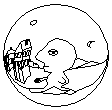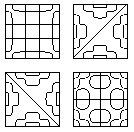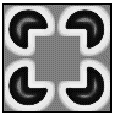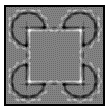
Directed Diffusion and Orientational Harmonics: Long range boundary completion through short range interactions
Ph.D. Thesis, Boston University 1994.
Visual illusions offer an invaluable tool for exploring the mechanism of visual perception, because illusory contours and surfaces appear predictably in response to certain configurations of visual inducers. Computer simulations that can replicate those same visual illusions therefore reveal the computational principles behind early visual processing. In this thesis I discuss the limitations of neural network theory to account for illusory contour formation, and present an alternative approach using analog field-like processes as suggested by Gestalt theory. The Directed Diffusion model accounts for collinear illusory contour formation by a spatial diffusion mechanism, while the Orientational Harmonic model proposes patterns of standing waves in the neural substrate to account for illusory contour formation through image vertices and intersections. The key ideas in this thesis appear in more concise and clear form in my MLRF and Directional Harmonic Theory papers respectively.














